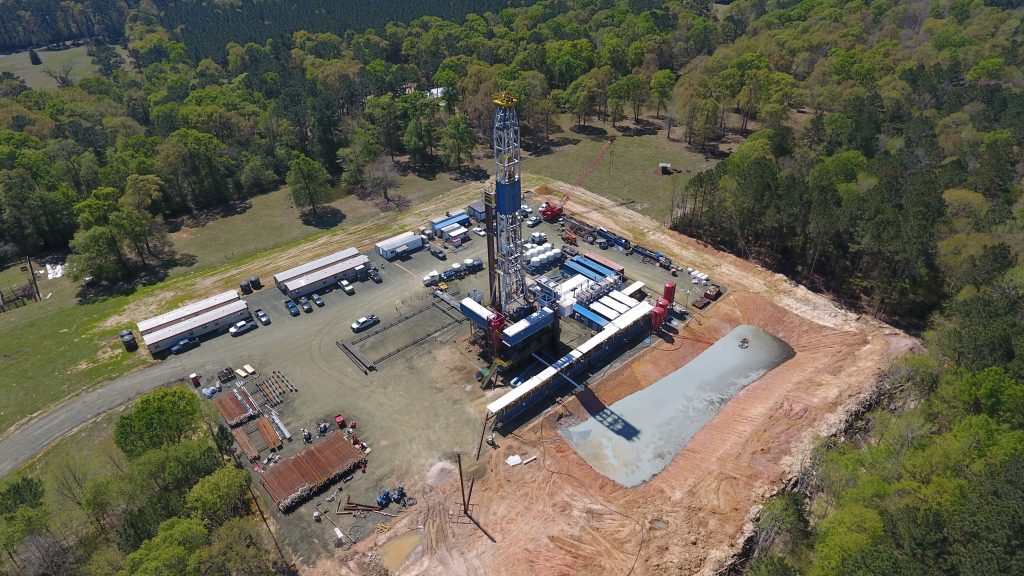
The discussion around reducing our carbon footprint often focuses on the quick switch from fossil fuels to renewable energy. However, experts in the oil and gas industry see a more complex picture. Fossil fuels are still projected to make up 48% of the global energy mix by 2050. This reality has led companies and investors to seek out realistic strategies to achieve a sustainable future.
Financial firms are reshaping their approach to environmental, social, and governance (ESG) commitments, creating new incentives and penalties for investors. Leading companies like ExxonMobil and Occidental Petroleum are investing heavily in carbon capture technologies and exploring renewable energy sources to reduce emissions.
Collaboration with other companies is also key. For example, Chevron is working with Algonquin Power & Utilities Corporation on renewable power projects and plans to invest $250 million by 2025.
Smart Asset Management Enhances Sustainability
As renewable energy sources become more common, oil and gas companies are looking for ways to streamline operations. This helps save money that can be reinvested into clean energy projects. A good example would be ARC Advisory Group, which highlights the need for companies to balance efficient and sustainable energy production with maximizing profits. They manage both modern and legacy systems within their infrastructure and with partners. The use of digital technologies is essential for maintaining this balance, and the speed of adopting new processes is increasingly seen as a key indicator of progress.
Enhancing Resilience Through Digitalization
The oil and gas industry has embraced digitalization to better manage its operations, from drilling rigs to pipelines. This shift helps companies gather and analyze data across vast and complex supply chains, a process much more intricate than simply switching to electric vehicles or managing investments.
Digital tools offer end-to-end system visibility, which helps companies adapt and grow in a low-carbon world. For example, SAP’s logistics solutions allow companies to track equipment throughout its lifecycle, from deployment to recycling, ensuring efficient resource management and cost control.
Contact DW Energy
Want to learn more about oil & gas investing? Our expert team can provide you with more information or schedule a consultation to talk about diversifying your investment portfolio.

Reducing Energy Costs Through Intelligent Asset Management
Intelligent asset management helps save energy in many ways. For instance, real-time data alerts allow companies to perform preventative maintenance, preventing carbon-intensive solutions like emergency shipments or production delays. This also enables remote diagnostics and support, reducing the need for travel to remote sites.
With the rise of generative AI, oil and gas companies can go beyond traditional sensor-based monitoring systems. They can use AI to enhance the understanding of operations and predict maintenance needs with greater accuracy.
Achieving Net-Zero: Realistic Investment Strategies
Oil and gas companies are actively expanding into renewable energy sectors. ExxonMobil, for instance, is starting a lithium production operation in Arkansas to support the electric vehicle battery market. Renewable aviation fuels and low-carbon hydrogen are becoming more prominent, and advances in chemistry are making plastics and other materials recyclable.
However, transitioning to clean energy is a long-term process. Companies are setting realistic net-zero targets that consider the need for secure, affordable, and resilient energy sources. It’s important to remember that oil and gas will remain a part of our lives, beyond just fueling our cars, as they are integral to many materials used daily.
The Future of Sustainability in Oil and Gas
The path to sustainability in the oil and gas industry is complex. By investing in new technologies and redefining business practices, the industry is making significant strides towards a more sustainable future. These efforts show a commitment not just to environmental responsibility but also to maintaining the industry’s viability and competitiveness in the years to come.
Contact dw energy
Sources:
“Energy Transition Outlook,” Det Norske Veritas, https://www.dnv.com/energy-transition-outlook/
“As Some Investors Walk Away From ESG, What Comes Next?” Forbes, https://www.forbes.com/sites/bhaktimirchandani/2024/01/22/as-some-investors-walk-away-from-esg-what-comes-next/
“Carbon Capture and Storage,” ExxonMobil, https://corporate.exxonmobil.com/what-we-do/delivering-industrial-solutions/carbon-capture-and-storage
“Carbon Innovation Project Ventures,” Occidental Petroleum, https://www.oxy.com/operations/carbon-innovation/project-ventures/
“Renewable Power and Energy Storage,” Chevron, https://www.chevron.com/sustainability/environment/lowering-carbon-intensity/renewable-power-partnerships-and-energy-storage-investments
“Oil, gas, and energy solutions from SAP and our partners,” SAP, https://www.sap.com/industries/oil-gas-energy.html#products
“ExxonMobil drilling first lithium well in Arkansas, aims to be a leading supplier for electric vehicles by 2030,” ExxonMobil, https://corporate.exxonmobil.com/news/news-releases/2023/1113_exxonmobil-drilling-first-lithium-well-in-arkansas
